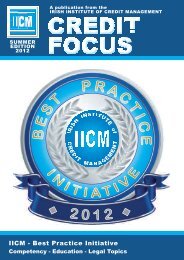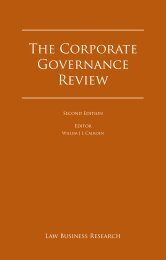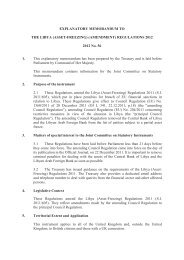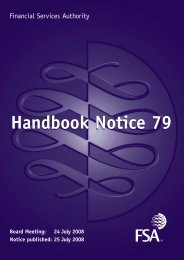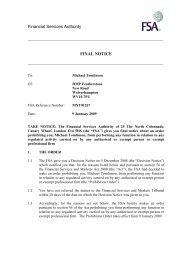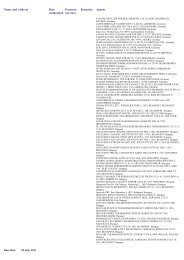FSA Annual Report 2006/07 - Better Regulation Ltd
FSA Annual Report 2006/07 - Better Regulation Ltd
FSA Annual Report 2006/07 - Better Regulation Ltd
You also want an ePaper? Increase the reach of your titles
YUMPU automatically turns print PDFs into web optimized ePapers that Google loves.
Section five – Financial statements<br />
<strong>FSA</strong> <strong>Annual</strong> <strong>Report</strong> <strong>2006</strong>/<strong>07</strong><br />
75<br />
e. Retirement benefit costs<br />
The company operates an occupational pension scheme, the <strong>FSA</strong> Pension<br />
Plan, for its employees. There are two sections in the pension plan: the Final<br />
Salary section (a defined benefit arrangement which is closed to new<br />
members) and the Money Purchase section (a defined contribution<br />
arrangement for new entrants).<br />
Defined contribution scheme – payments to the defined contribution section<br />
are recognised as an expense in the income statement, as they fall due.<br />
Defined benefit scheme – the charge to the income statement is the current<br />
service, past service, and interest costs of the scheme liabilities, less the<br />
expected return on the scheme’s assets.<br />
The obligation in respect of the defined benefit pension scheme represents the<br />
present value of future benefits owed to employees in return for their service<br />
in the current and prior periods. The discount rate used to calculate present<br />
value of those liabilities is the market rate at the balance sheet date of high<br />
quality corporate bonds having maturity dates approximating to the terms of<br />
those liabilities. The calculation is performed by a qualified actuary using the<br />
projected unit credit method at each balance sheet date.<br />
Past service cost is recognised immediately to the extent that the benefits are<br />
vested, and otherwise is amortised on a straight-line basis over the average<br />
period until the benefits become vested.<br />
The net liabilities of the defined benefit scheme are calculated by deducting<br />
the fair value of the scheme’s assets from the present value of its obligations,<br />
and disclosed as a long term liability on the balance sheet.<br />
Actuarial gains and losses arising in the defined benefit scheme (for example<br />
the difference between actual and expected return on assets, effects of<br />
changes in assumptions and experience losses arising on scheme liabilities)<br />
are recognised in full in the statement of recognised income and expense in<br />
the period in which they are incurred.<br />
f. Financial penalties received<br />
Under the FSMA, the <strong>FSA</strong> has the power to levy financial penalties, but it is<br />
required to apply those penalties for the benefit of its fee-payers. The <strong>FSA</strong>’s<br />
policy for doing so is to use the penalties received in each financial year to<br />
reduce the amount owed by fee-payers in the relevant fee block in the<br />
following financial year. Penalties received are included in current liabilities:<br />
trade and other payables.<br />
g. Leasing<br />
Leases are classified as finance leases whenever the terms of the lease transfer<br />
substantially all the risks and rewards of ownership to the lessee. All other<br />
leases are treated as operating leases.<br />
Rentals payable under operating leases are charged to the income statement<br />
on a straight line basis over the term of the lease. Benefits received and<br />
receivable as an incentive to enter into an operating lease are also spread on<br />
a straight line basis over the lease term.



